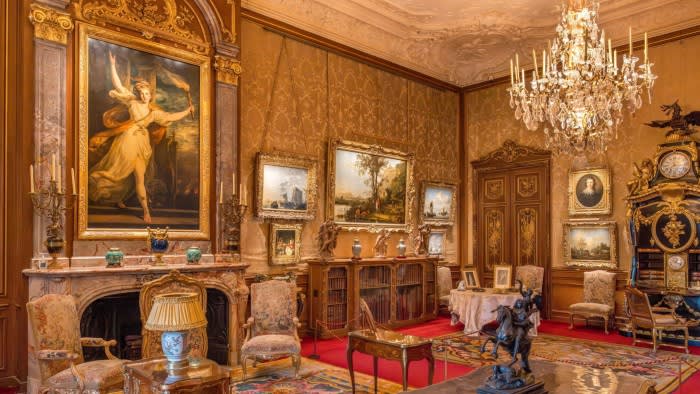Stay informed with free updates
Simply sign up to the UK tax myFT Digest — delivered directly to your inbox.
HM Revenue & Customs has exempted more than £1bn of art, buildings and land from inheritance tax under a scheme for UK national heritage assets.
Responding to a freedom of information request, HMRC told the Financial Times it had accepted £1.05bn of objects and property under the Conditional Exemption Tax Incentive scheme between the 2019-20 and 2024-25 tax years.
Under the scheme, owners of “objects with national scientific, historic or artistic interest” can avoid inheritance tax by guaranteeing HMRC that they will maintain the objects and make them available for the public to view. The tax comes due if the items are removed from the scheme or sold.
The £1.05bn figure consisted of 3,888 objects and properties, which suggests a mean value of £270,000, although some objects will be small artworks and some properties will be country houses and landed estates.
The sum is the value of the items rather than the tax forgone, which HMRC estimated last December would cost £225mn over the same period.
Clarissa Levi, art and heritage counsel at law firm Wedlake Bell, said £1.05bn was “a huge number” and an “exceptionally encouraging snapshot of the way we are protecting and nurturing our heritage in this country”.
This was because owners were obliged to keep the items safe and in good repair and to share them with the public, she said.
Sarah Roller, director of policy and public affairs at Historic Houses, which has about 150 members who benefit from the scheme, said: “Conditional exemption as a scheme has proven to be not only cost-effective for the government, and for taxpayers, but one which generates huge amounts of wider public benefit.”
HMRC emphasised that the £1bn sum was based on values provided by those claiming the relief. The value of items if later sold could be significantly different.
One adviser described the £1bn sum as “bullish”, noting that it was “in the interest of people who are making those claims to be optimistic about those values”. That is because a higher earlier valuation would incur lower capital gains tax, based on growth in value, in a later sale.
Works that have gained conditional exemption since 1998 must be deemed by heritage advisers to be of national importance, rather than just objects of “museum quality”, the previous threshold.
Recommended
Items on the database — ranging from paintings by Rubens and Picasso to a toast rack from 1900 — are meant to be available for viewing by appointment through a named contact. But a sample of 100 objects by the FT last month showed gaining access to items was difficult or impossible in most cases.
The contact information for a work by a 17th-century Flemish painter was for a lawyer who died in 2021, while the contact for a still life by Winston Churchill was an art dealer jailed in 2019 for defrauding clients of up to $30mn.
One item on the database, a Meissen porcelain dish, was stolen in 2003, and at least four had been sold.


